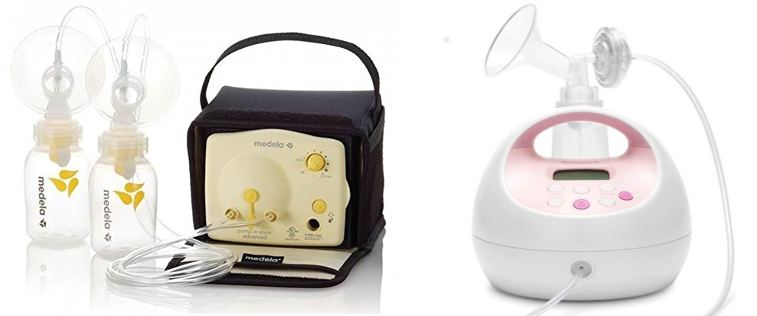
The Value of a Hospital Grade Pump or, Isn’t my Insurance Pump Good Enough???
When a breastfeeding mother returns to work at the end of her maternity leave, the transition back to the workplace is almost as monumental as becoming a mother in the first place. The changes that need to be integrated into her life are sweeping and immeasurable. Unfortunately for most mothers in the United States, this transition is happening while babies are very young, 12 – 16 weeks of age; largely due to the paucity of maternity and family leave benefits. As a board certified lactation consultant counseling these mothers, often the primary concern these women wish to discuss is maintenance of their milk supply. Maintenance of one’s milk supply is reliant upon consistent, quality drainage of the breasts. When separated from her baby, a mother’s best options for best drainage are hand expression or pumping with a quality double electric breast pump. While elsewhere across the globe mothers primarily rely upon hand expression during periods of mother-baby separation, women in the United States are more apt to utilize a breast pump to collect milk for their babies to offer during periods of separation. Since the initiation of the ACA in 2014 most women receive some form of breast pump benefit through their health insurance around the time of their baby’s birth.

All good? Right? Wrong! The majority of pumps being “given” to mothers following the births of their babies are not well-suited to provide efficient and effective milk expression over prolonged periods of separation, such as a return to full time work outside of the home. For more on this see our blog article on the pumps women are receiving from their DME. More maddening for me as a breastfeeding counselor is that most mothers assume that their insurance-provided pump is just great and don’t question or seek out a better quality pump. They may fall prey to aggressive marketing by breast pump manufacturers suggesting that the personal use pumps are “hospital grade” (include link to article about hospital versus personal use pumps) or simply decide the pump must be just fine, since it was endorsed by their health plan and received only after their doctor wrote a prescription in order for the pump to be dispensed.
Women I meet with at the Lactation Care office for return to work consultations are often shocked to learn that their insurance pump isn’t the best available option for expressing their milk and maintaining their milk supply. They are rightly incensed! 
I will try to refrain myself at this time from getting up on my feminist soap box and ranting about the structural misogyny present in a system that doesn’t allow for longer (dare to dream) paid maternity leave, and expects women to return to work an maintain their milk supplies with crappy pumps, inadequate for the job. For example, in my home state of Massachusetts, Blue Cross Blue Shield doesn’t provide a true hospital grade breast pump, such as the Medela Symphony, even in the event of a newborn being hospitalized due to prematurity, congenital birth defect or other medical need.
Even the mothers lucky enough to have a real hospital grade pump option benefit are often not informed of their benefit until it is too late to be helpful for them. For example, here in Eastern Massachusetts we are seeing that women with Tufts as their primary insurance provider are entitled to either a Symphony rental pump for up to 12 months or a personal use pump like a Pump in Style or Spectra. A maddening number of Tufts members are “given” the Pump in Style prior to the birth of the infant or during the chaotic period of time known as “discharge day”, the day they go home from the hospital with baby, without being informed of the full range of their benefit options. You can imagine the ire of these women when they learn during a back to work consultation that they could have had access to a Symphony through their insurance but hadn’t been given the information about that benefit option by their trusted healthcare providers. Faced with going back to work and needing a fast, efficient pump to use at the office, they wind up paying for a rental Symphony out of pocket.
Given this fairly hostile environment that women are living in and nurturing their babies as best they can, what’s a woman to do? One suggestion is to research your insurance pump options prior to birthing your baby, before you are sleep-deprived, harried, and potentially struggling with milk supply issues. You are more apt to select a pump based on real information rather than haste. If your baby has already arrived, recheck you benefit. Harvard Pilgrim offers both a rental Symphony and a personal use pump but won’t allow the two pumps to be dispensed within the same 30 day billing period (I feel another rant coming on about who exactly is served by that policy!…) If you have truly exhausted your pump benefit, strongly consider renting a Medela Symphony pump privately.
Women are sometimes skeptical that the personal use pumps and rental pumps are truly that much different. Yes, Virginia, they are! Pumping times are significantly shorter with the Symphony pump, only 10-12 minutes, versus the 20 minutes typical for most insurance pumps like the Pump-In-Style Advanced. The shorter pumping time makes frequent pumping at work far easier to manage. In addition to being a shorter pump time, the more powerful and more efficient Symphony pump is far more comfortable for most women as well. Many women are skeptical of this last point and will say, “Andrea, how can the pump be both more powerful and more comfortable?” Simply stated, the suction curve on a Symphony is more gradual. If you were to graph it, it would resemble a gentle sin-cosine wave back from your trigonometry days.

Graphing the suction gradient on a Pump in Style or similar pump would more closely resemble the reading from a Richter Scale during a temblor.

The pumps are engineered differently. Add in the facts that the Symphony pump is almost whisper-quiet and has an internal rechargeable battery, it’s no surprise that women are happily impressed when they make the switch. Then they give me a puzzled look and ask why this pump wasn’t provided by their insurance.
If you live in the Greater Boston area and are charting the course for your return to work, think about contacting us about either renting a Symphony pump or booking a back to work consultation. We also welcome inquiries from corporate human resources departments looking for expertise in establishing or maintaining lactation rooms for their employees. We can be reached by phone at 617-244-5593 or contact us by email at info@lactationcare.com. We offer pumps for rent at a daily rate of $2.50 per day, much less than the daily cost that would be associated with formula feeding, not to mention less than your daily latte at Starbucks. All of our rental Symphony pumps are outfitted with rechargeable batteries, giving you the pumping flexibility and efficiency you need. You can learn more about our rental pump program here http://lactationcare.com/index.php/breast-pump-rental.html
